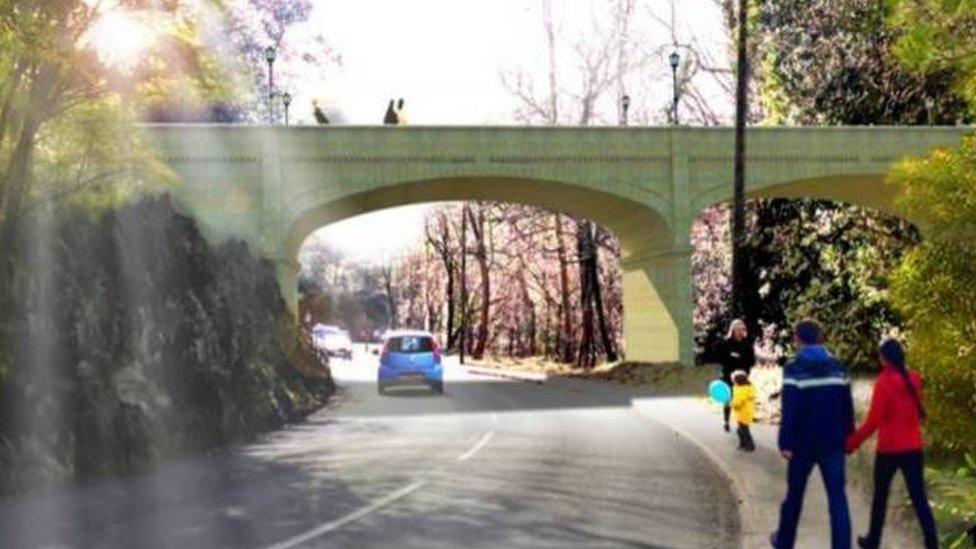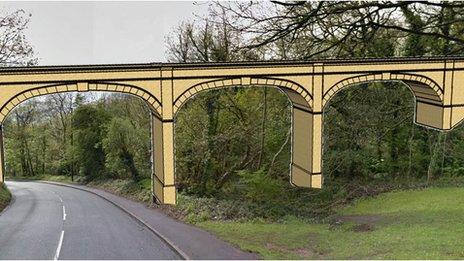Clifton Downs bridge plan plea to Michael Gove
- Published

The bridge would provide a safe crossing between two parts of the Downs at a dangerous section of Bridge Valley Road
A bridge linking two parts of the Clifton Downs in Bristol could be built at last.
The classical stone bridge across Bridge Valley Road would complete a missing link in a circular route.
Plans for the 80m-long structure proved popular when submitted two years ago, but have faced several official hurdles since then.
Now the engineer who worked on the design has asked Environment Secretary Michael Gove to intervene.
The Commons Act 2016 requires permission from the environment secretary before any structure is built on common land.
Masonry bridge engineer Adrienn Tomor, based at the University of the West of England, worked on the original design with Friends of the Downs and Avon Gorge, a community organisation involved in preserving the area.
'Safer for pedestrians'
She said: "The proposed bridge over Bridge Valley Road will be made of stone, consistent with the great houses that grace Clifton and our city.
"By connecting the two parts of the Downs at a dangerous section of Bridge Valley Road, the bridge will make crossing safer for pedestrians and cyclists and add to the aesthetic of the area.
"The bridge has already been approved through one planning process - the next stage will review that evidence before further permissions can be granted."
New paths would link the bridge with existing roads as cycling is prohibited on The Downs and The Promenade, said Dr Tomor.
But the scheme would require the removal of 38 trees and is in a conservation area.
Some 14 objections were lodged when the plans were first submitted to Bristol City Council in March 2016, although another 148 people voiced their support.
It was recommended for refusal, but a planning committee permitted it in July 2016 providing a legal agreement securing £85,000 for compensatory tree planting could be reached.
However, the committee changed its decision and refused the scheme six months later - only for it to be overturned by a planning inspector in October 2017.
The planning inspectorate will now make the decision on behalf of Defra.
- Published9 July 2013
